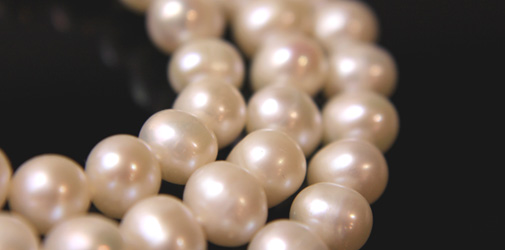
Pearl Features
Unlike diamonds, there is no industry-wide standard for grading pearls, but six of their characteristics are typically considered when evaluating their quality and value: size, color, shape, surface, nacre and lustre.
Size
A pearl's diameter is measured in millimetres to determine its size, with the shortest length calculated if the pearl isn't perfectly spherical. Similar to diamonds, size is just one aspect of a pearl's value, and should not be considered its most important feature in isolation.
Color
The quality and rarity of a pearl's color can significantly affect its worth. Two components are taken into account: the main color of the pearl and its overtone. Overtone refers to the additional wash of color that's exhibited when the pearl is viewed from certain angles, and should be fairly thick and evenly spread across the pearl's surface. Pearl colors can be comprised of warm or cool tones, and can range from white to black – with many colors of the rainbow in between.
Shape
While many pearls are round – and a perfect sphere is largely considered the most ideal shape – pearls can also be formed in a number of other shapes, including oval, half-rounded, drop, and completely asymmetrical (known as baroque pearls).
Surface
As natural phenomena, pearls may contain organic markings such as color spots, cracks and indentations. As expected, pearls that contain the fewest amounts of blemishes and imperfections are considered the most desirable and valuable.
Nacre
Commonly called 'mother of pearl', nacre is the name of the iridescent material that mollusks discharge to fight irritants, which produces pearls. This combination of calcium carbonate and conchiolin is also what coats the inner surfaces of mollusk shells, giving them – and their pearls – a shimmering glow. Due to its eye-catching beauty, generally the thicker the nacre around the pearl, the higher its value.
Lustre
Related in part to the quality of its nacre, pearls are also judged by their natural glow and abilities to reflect light. An excellent-quality pearl will have such a brilliant sheen that it will reflect people and objects held close to its surface. Pearls with a low degree of lustre and general dullness are usually sold at lower prices.













